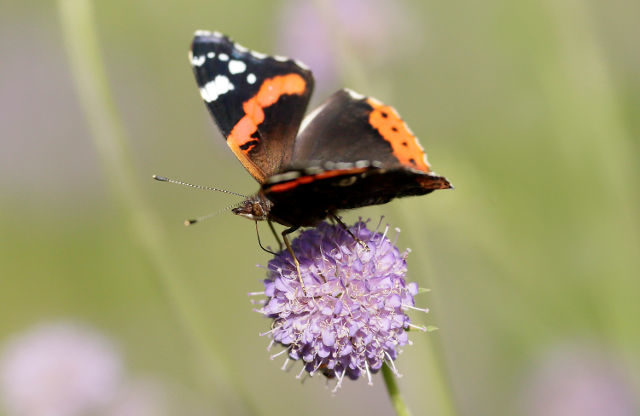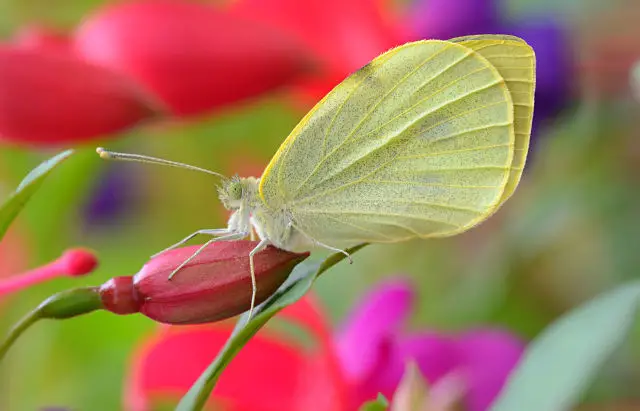Katie shares this latest bews from Butterfly Conservation. Ed
Common butterflies saw their numbers collapse over the summer despite the UK experiencing weather conditions that usually help them to thrive, results from the Big Butterfly Count have revealed.
The majority of butterfly species studied as part of the scheme saw their populations fall with some producing their worst numbers since the Big Butterfly Count scheme began.
Worst summer for some species
Widespread species such as the Gatekeeper, Comma and Small Copper experienced their worst summers in the project’s history and were down 40%, 46% and 30% respectively compared to last year.
The Small Tortoiseshell saw a 47% drop in numbers and Peacock slumped by 42% with both species recording their second worst years.
Numbers of the colourful Peacock have now dropped from an average of 3.6 individuals per count in 2013 to just 0.5 per Count in 2016, a six-fold decrease over three years.
Figures lower than wet summer of 2012
Participants also saw the lowest number of butterflies per count since the scheme began with an average of just 12 butterflies spotted.
These figures were even lower than those experienced during the cold and wet disaster summer of 2012 – the worst year on record for UK butterflies.
These falls come despite the summer of 2016 being warmer than average and relatively dry – conditions butterflies typically depend upon in order to successfully breed and feed.
https://youtu.be/nMhUPN1VFdM
Reasons why butterflies have struggled despite favourable summer weather conditions are as yet unclear.
Butterfly Conservation’s Head of Recording, Richard Fox, said:
“The drop in butterfly numbers this summer has been a shock and is a bit of a mystery. When we have cold, wet summers, as in 2012, we expect butterfly populations to plummet, but that wasn’t the case this year.
“The summer months were warmer than usual, yet most Big Butterfly Count participants saw fewer butterflies. Perhaps the very mild winter had a negative effect, or the cold spring, or perhaps the impacts of intensive farming and pesticides are really hitting these common species now.
“The importance of Big Butterfly Count is that it takes place every year over a long period; the longer it goes on the more we can learn about the causes that are driving the declines and in some cases, increases of our beautiful butterfly species. We are really grateful to the many thousands of people across the UK who do their bit to help butterflies by taking part in the Big Butterfly Count each summer.”
Bucking the trend
The Red Admiral and Green-veined White bucked the negative trend to experience good years. The Red Admiral was up 70% compared to 2015, had the largest year-on year-increase of any species and achieved its second highest abundance since the Count began.
The Green-veined White was up by 58% compared to last year and was the only one of the common white butterfly species to experience a substantial rise in numbers.
The most commonly seen species was the Large White, up 2% from last year and topping the Count for the first time.
The Large White’s position can be attributed to other species experiencing poor years rather than the butterfly faring particularly well.
The Big Butterfly Count
More than 36,000 people took part in this year’s Count, spotting around 390,000 butterflies during the three-week mid-summer recording period.
The Big Butterfly Count helps Butterfly Conservation find out how the UK’s common species are faring and how to best protect them in the future.

Image: © Iain H Leach
The Big Butterfly Count is sponsored by Waitrose and John Lewis. Tor Harris, Head of Sustainability and Responsible Sourcing at Waitrose, said:
“Treading lightly on the environment is so important to us at Waitrose and that’s why we were passionate about supporting the Big Butterfly Count this summer – a great initiative that encourages people throughout the UK to play a key role in providing a better understanding of the butterfly population and with it the wider environment.”
Stephen Cawley, Head of Sustainability and Responsible Sourcing at John Lewis, said:
“At John Lewis we are passionate about supporting local communities and putting something back in and so as part of our schools’ programme, Bringing Skills to Life, we’re pleased to have supported the Big Butterfly Count over the summer months. It’s projects like this nationwide study that help future generations to learn about science in an exciting way – at the same time, they are undertaking valuable research into what’s happening to our environment.”
Results can be found on the Big Butterfly Count Website
Image: © Andrew Cooper





